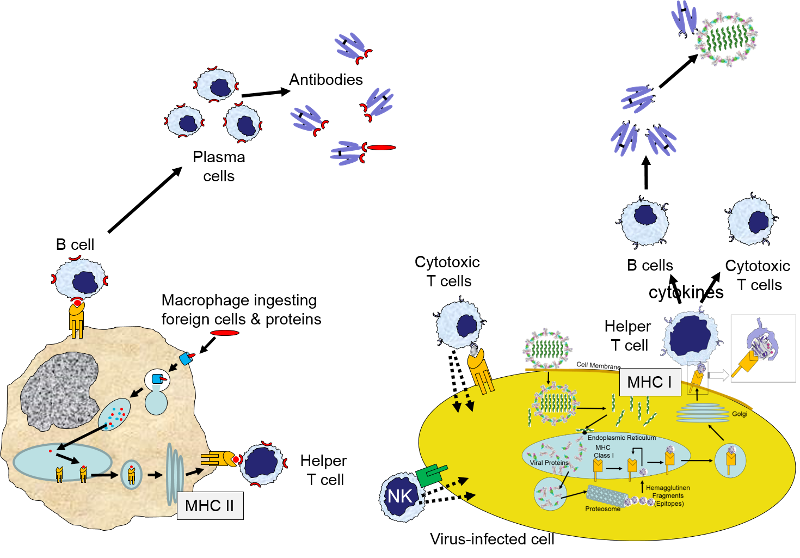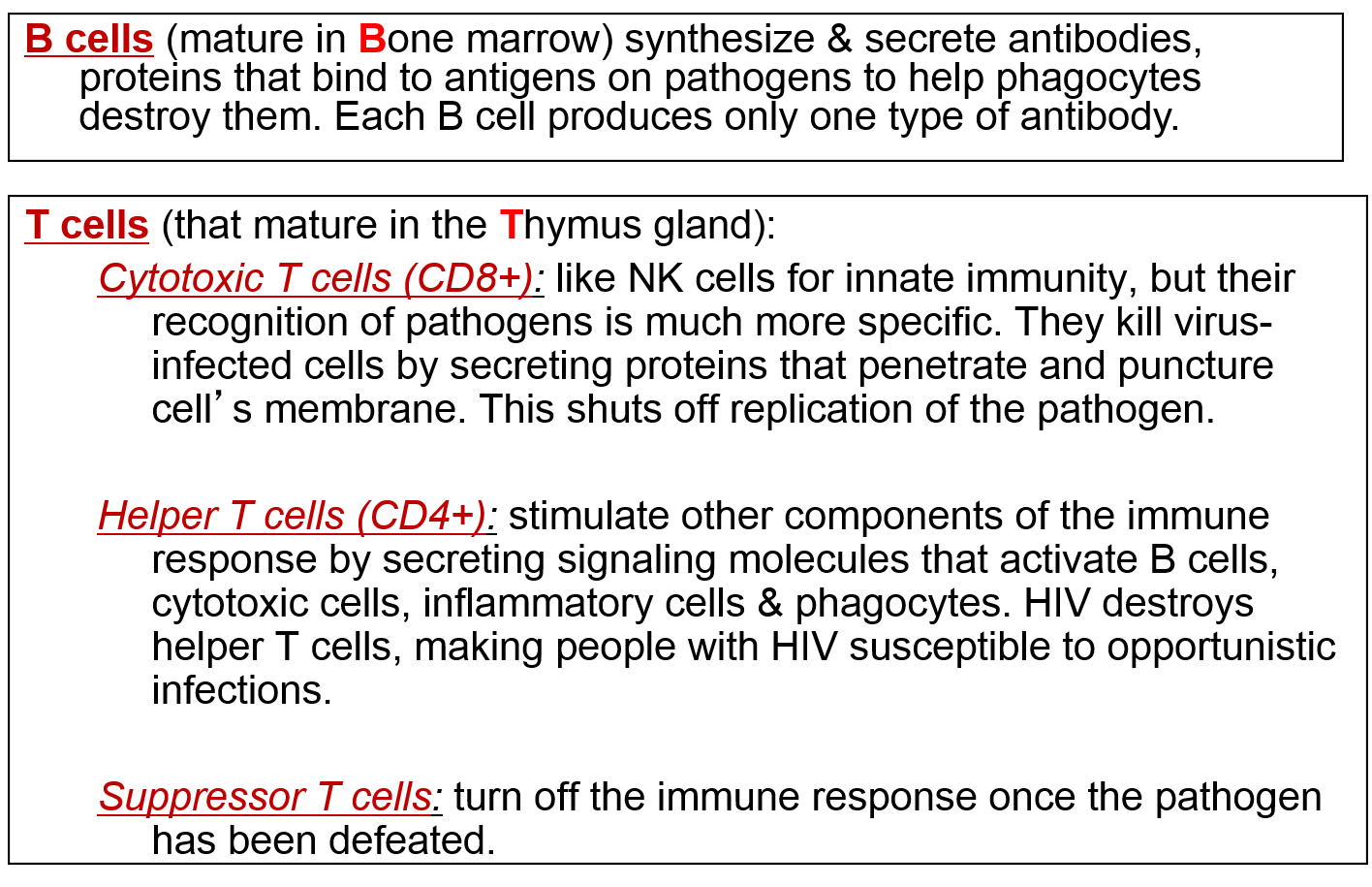Summary of Adaptive Immunity
The image below provides a brief summary of innate and adaptive immunity.

The left-hand portion of the image shows a macrophage binding to a bacterium via its toll-like receptors. This initiates engulfment and breakdown of the bacterium and the "presentation" of bacterial epitopes on the MHC class II molecules inserted into the surface of the macrophage. In essence, this provides an important interface between the innate and adaptive immune systems, because the presentation of antigens by the macrophage provides an opportunity to stimulate helper T cells and B cells, which are part of the adaptive immune system. Helper T cells will further activate B cells and promote their replication and differentiation into plasma cells that will produce antibodies that will specifically tag that epitope and aid in identification and destruction of the bacteria by macrophages and neutrophils.
While not shown here, engulfment of a pathogen by a macrophage and damage to local cells would also trigger an inflammatory response, which would entail release of a variety of cytokines and chemoattractants, dilation of local blood vessels, and translocation of neutrophils, fluid, and complement proteins from capillaries into the affected tissue.
The image on the far right above shows a human cell that has become infected with virus. As part of its normal "self-checking," all proteins synthesized inside the cell (including viral proteins) are sampled and broken down, and selected fragments are "presented" on the MHC class I molecules present in all nucleated cells. Helper T cells with matching receptors will become activated and will release a variety of cytokines to recruit and activate B cells and cytotoxic T cells with matching receptors. These also will replicate over and over, forming large clones of identical cells. Cytotoxic T cells will then bind to cells displaying that particular epitope, and they will release cytotoxic substances that will kill the infected cells, thereby shutting off further production of virus. The activated B cells will differentiate into plasma cells that produce antibody specific for the viral epitopes and will bind to extracellular viruses, effectively neutralizing them so that they are unable to bind to and infect other cells. The antibody tags will also aid in the phagocytosis of viruses tagged with antibody. Note also that natural killer cell (NK cells) can also attack cells with missing or abnormal MHC molecules as a result of viral infection or cancer. NK cells are a special class of lymphocytes that are considered part of the innate immune system, because their action is non-specific, i.e., not triggered by contact with specific foreign epitopes.
Lymphocytes in the Adaptive Immune System



